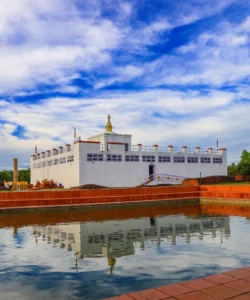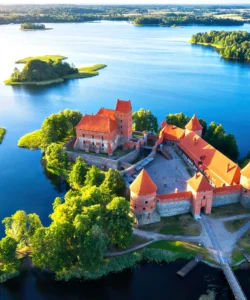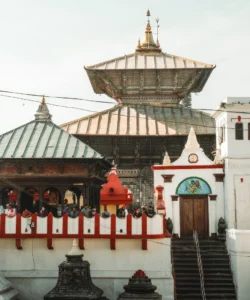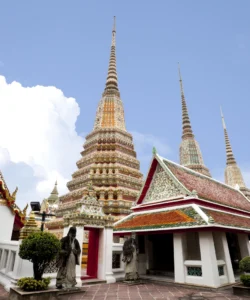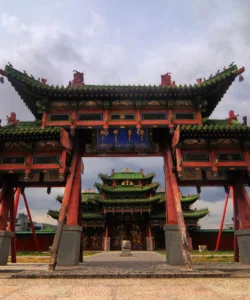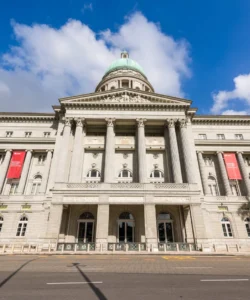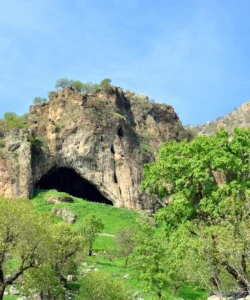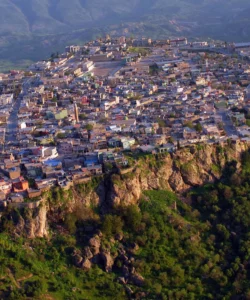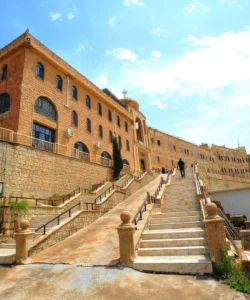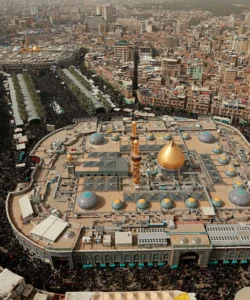Babylon is an ancient city located in central-southern Mesopotamia, within modern-day Iraq, near the town of Al-Ḥillah and approximately 85 kilometers (53 miles) south of Baghdad. It is one of the most famous and influential cities of the ancient world, renowned for its monumental architecture, a rich history as the capital of two powerful empires, and its association with biblical and legendary tales.
Name: Babylon (Akkadian: Bābilim, “Gate of God”)
Address: The archaeological site is located on the Euphrates River, near the city of Al-Ḥillah, Babil Governorate, Iraq.
How to Get There:
Travel to the Babylon archaeological site is extremely difficult and unsafe for general tourism due to the political instability in Iraq. The following information is for historical context and is not a recommendation for travel.
- By Air: The closest international airport is Baghdad International Airport (BGW). A road trip would be necessary to reach the site.
- By Road: A day trip from Baghdad is a common way to visit, but the journey can be perilous. Taxis or private vehicles are the only option, but security can be a concern.
- On-Site: The ruins are a vast complex, and exploring them requires a significant amount of walking. Guides are highly recommended.
Landscape and Architecture:
The “architecture” of Babylon is a mix of ancient ruins and controversial modern reconstructions, which together tell a story of an ancient metropolis and a recent, tumultuous history.
- UNESCO World Heritage Site: Babylon was inscribed on the UNESCO World Heritage List in 2019, a testament to its immense cultural value.
- The Ishtar Gate: The most iconic and recognizable structure at the site is the replica of the Ishtar Gate. The original, a masterpiece of Neo-Babylonian architecture with its stunning blue glazed bricks and reliefs of dragons and bulls, was dismantled by German archaeologists and is now on display in the Pergamon Museum in Berlin. The replica in Babylon is a smaller version of the original.
- The Processional Way: This was the main street that led from the Ishtar Gate to the main temple complex. It was lined with a vibrant series of lion reliefs on glazed bricks, and parts of it have been reconstructed.
- The Etemenanki Ziggurat (Tower of Babel): The ruins contain the remains of the massive ziggurat dedicated to the god Marduk, known as the Etemenanki. Although today only a large mound of earth remains, this was a monumental, seven-staged stepped tower that is widely believed to be the inspiration for the biblical story of the Tower of Babel.
- The Southern Palace: The ruins of the immense palace of King Nebuchadnezzar II, the most famous ruler of the Neo-Babylonian Empire, can be seen. It was here that archaeologists have uncovered a series of vaulted chambers that some speculate could have been part of the foundations for the legendary Hanging Gardens of Babylon.
- The Lion of Babylon: A large, carved basalt statue of a lion standing over a prostrate man, a powerful symbol of Babylonian might, is one of the most celebrated artifacts at the site. It is believed to be a Hittite piece brought to Babylon.
- Saddam Hussein’s Palaces: The site contains a highly controversial modern “restoration” project undertaken by former Iraqi dictator Saddam Hussein, who had sections of the ancient city rebuilt and even constructed a palace for himself on a hill overlooking the ruins. This has been a source of debate among archaeologists.
What Makes It Famous:
- Capital of Two Empires: Babylon is famous for its role as the capital of two major ancient empires: the Old Babylonian Empire under Hammurabi and the Neo-Babylonian Empire under Nebuchadnezzar II.
- Biblical and Historical Significance: The city is a central figure in the Bible, most famously associated with the Tower of Babel and the “Babylonian Captivity” of the Jews. It also features prominently in the writings of ancient Greek historians like Herodotus.
- Hanging Gardens of Babylon: It is the legendary location of the Hanging Gardens of Babylon, one of the Seven Wonders of the Ancient World. While its existence is still debated and no definitive archaeological evidence has been found, its fame has endured for millennia and has inspired countless works of art and literature.
- Iconic Architecture: The Ishtar Gate, with its glazed brick reliefs, and the Etemenanki Ziggurat are masterworks of ancient Mesopotamian architecture and have become enduring symbols of the city.
- Symbol of Ancient Mesopotamia: Babylon stands as a symbol of the immense power, cultural sophistication, and scientific advancements of the ancient Mesopotamian civilizations. Babylonian astronomers pioneered a new empirical approach to the study of the heavens, and their mathematical system, based on the number 60, is still used today.
Differences from Some Other Wonders:
- Contested Restoration: Unlike most historical sites that undergo careful, scientific restoration, Babylon is known for its controversial and unscientific reconstruction under Saddam Hussein. This modern layer of history and the debate surrounding it is a unique aspect of the site.
- A “Lost” Wonder of the World: While other wonders are present today (e.g., the Great Pyramid of Giza), Babylon’s fame is tied to its “lost” wonder, the Hanging Gardens. This element of myth and legend is a key part of its appeal.
- Transferred Artifacts: The fact that its most famous structure, the Ishtar Gate, is in a museum in Germany and not at the site itself is a unique and unfortunate part of Babylon’s story.
- Biblical Infamy: Unlike other ancient cities that are simply historical sites, Babylon has an added layer of infamy and symbolism from its frequent and often negative portrayal in the Bible.
- Layered History: While Ashur is the religious capital of the Assyrians and Hatra is a fusion of Roman and Parthian styles, Babylon is a continuous and layered city of multiple empires over millennia.
Babylon Photos:
































